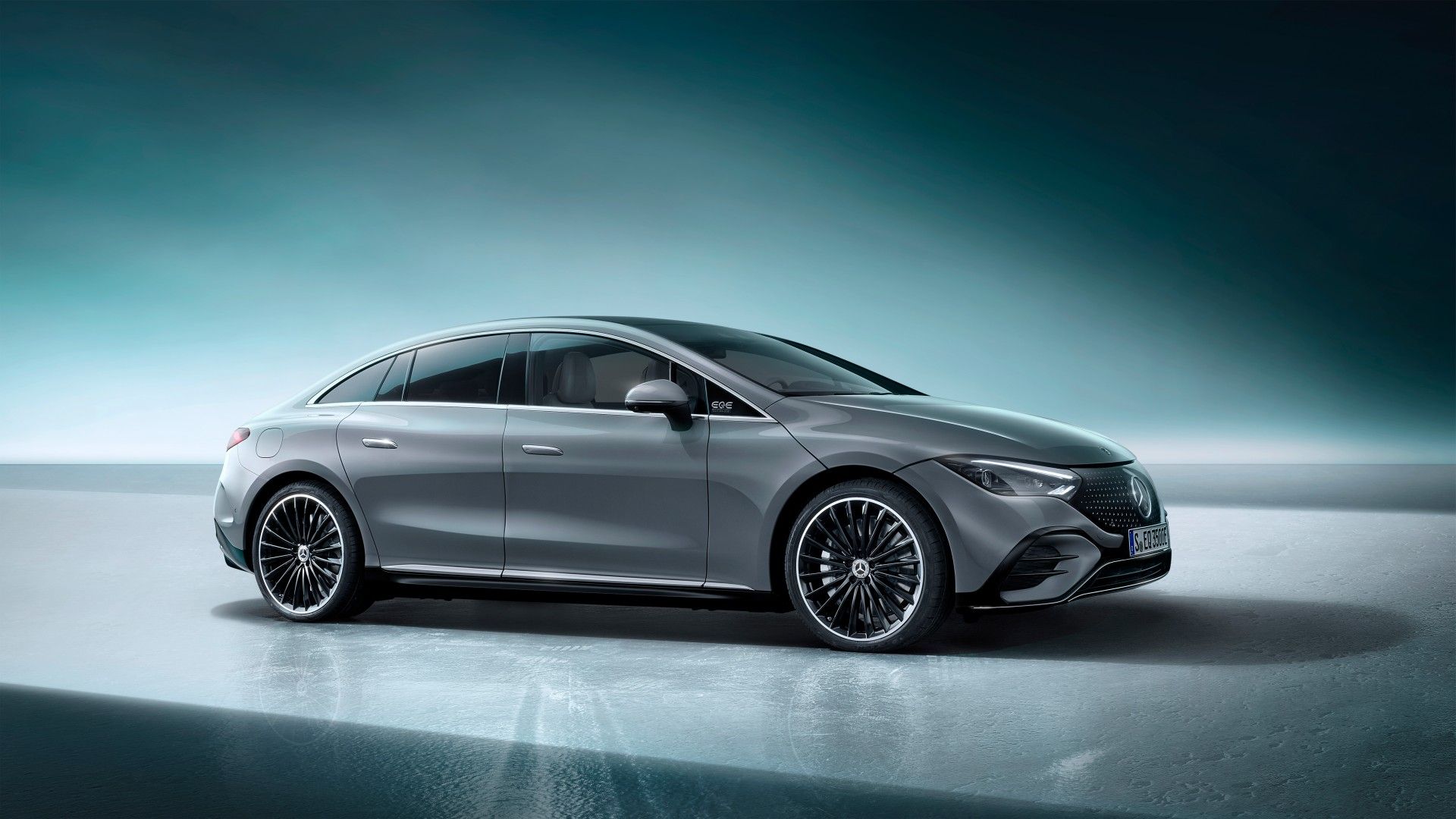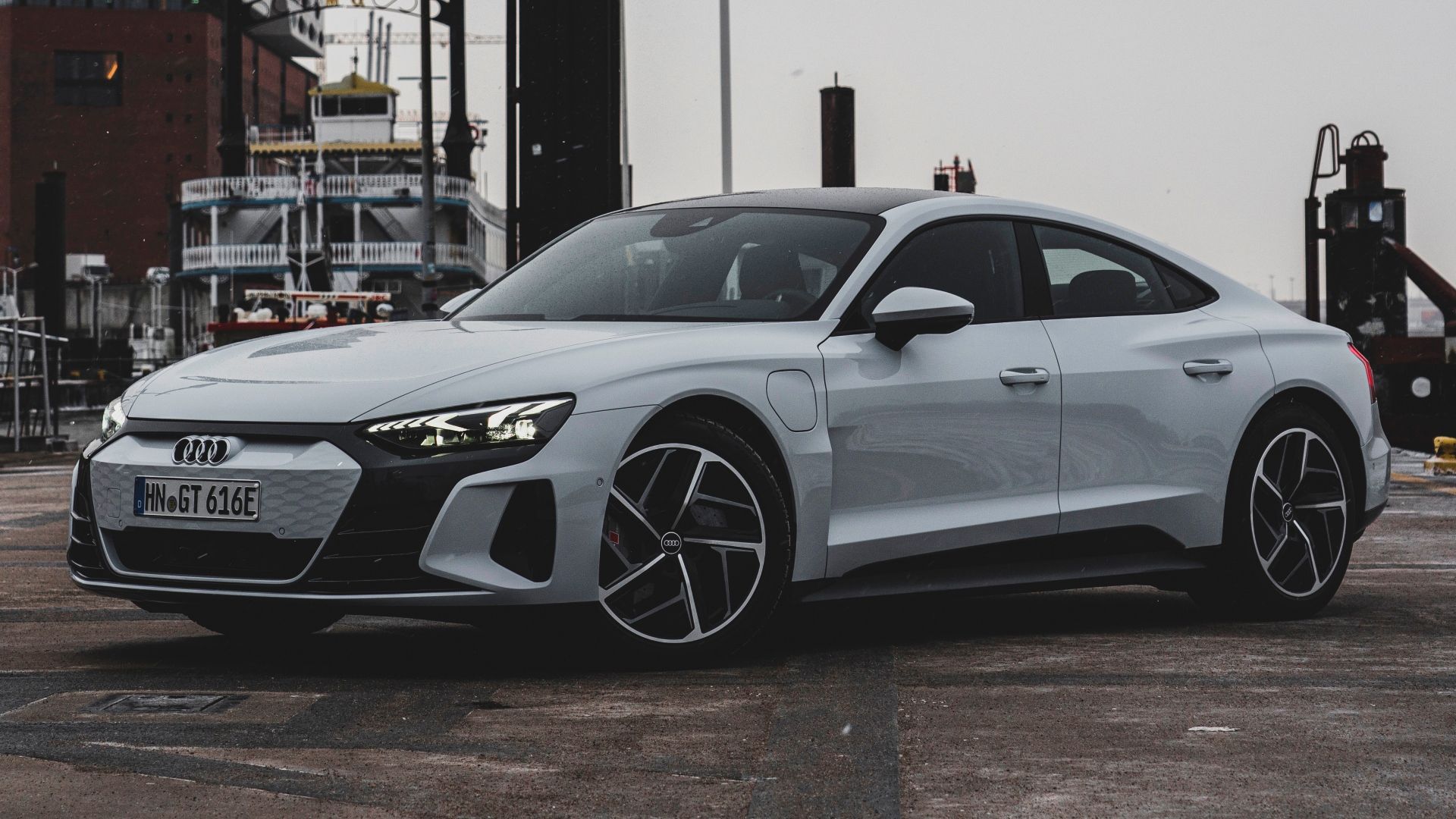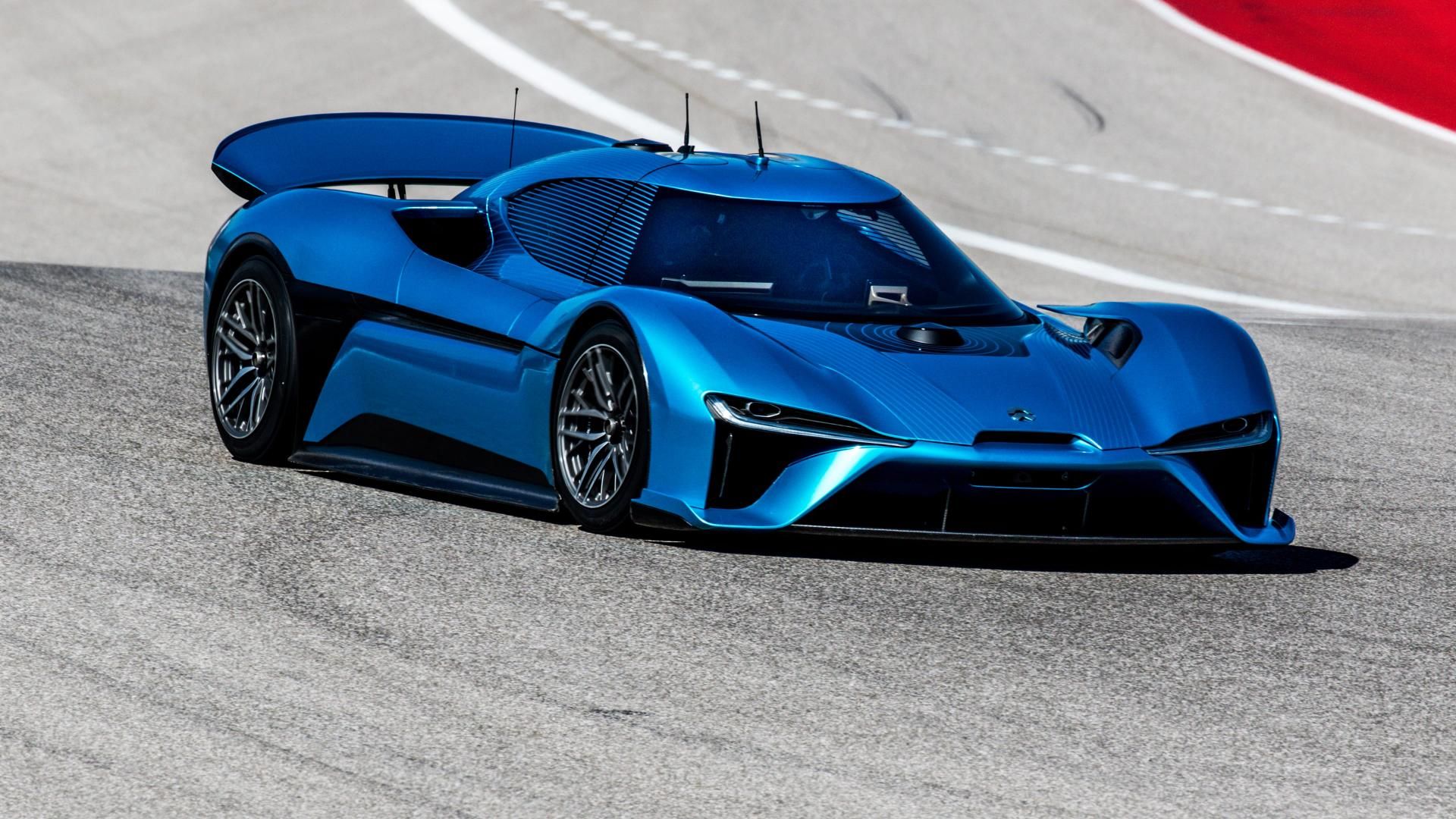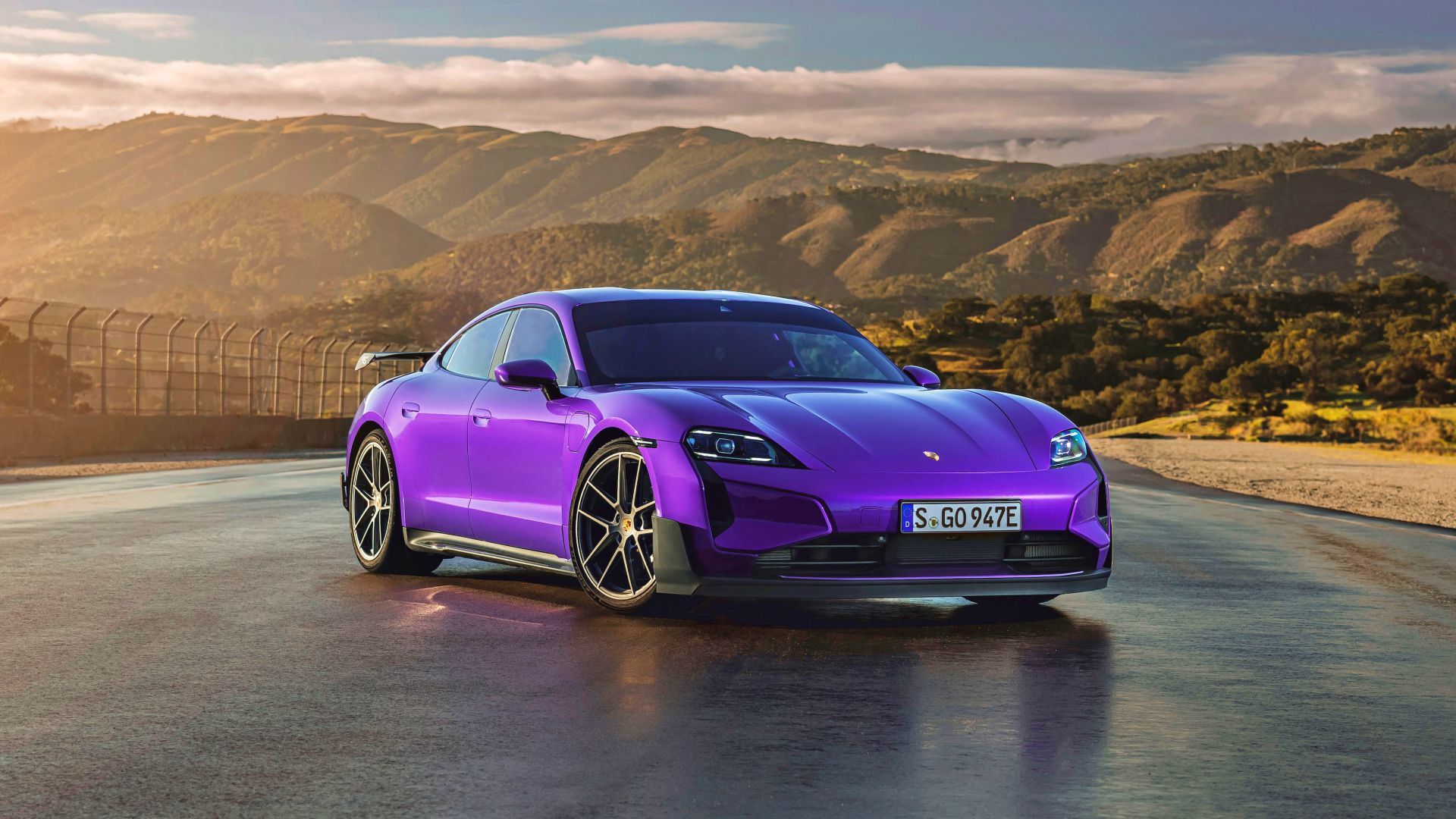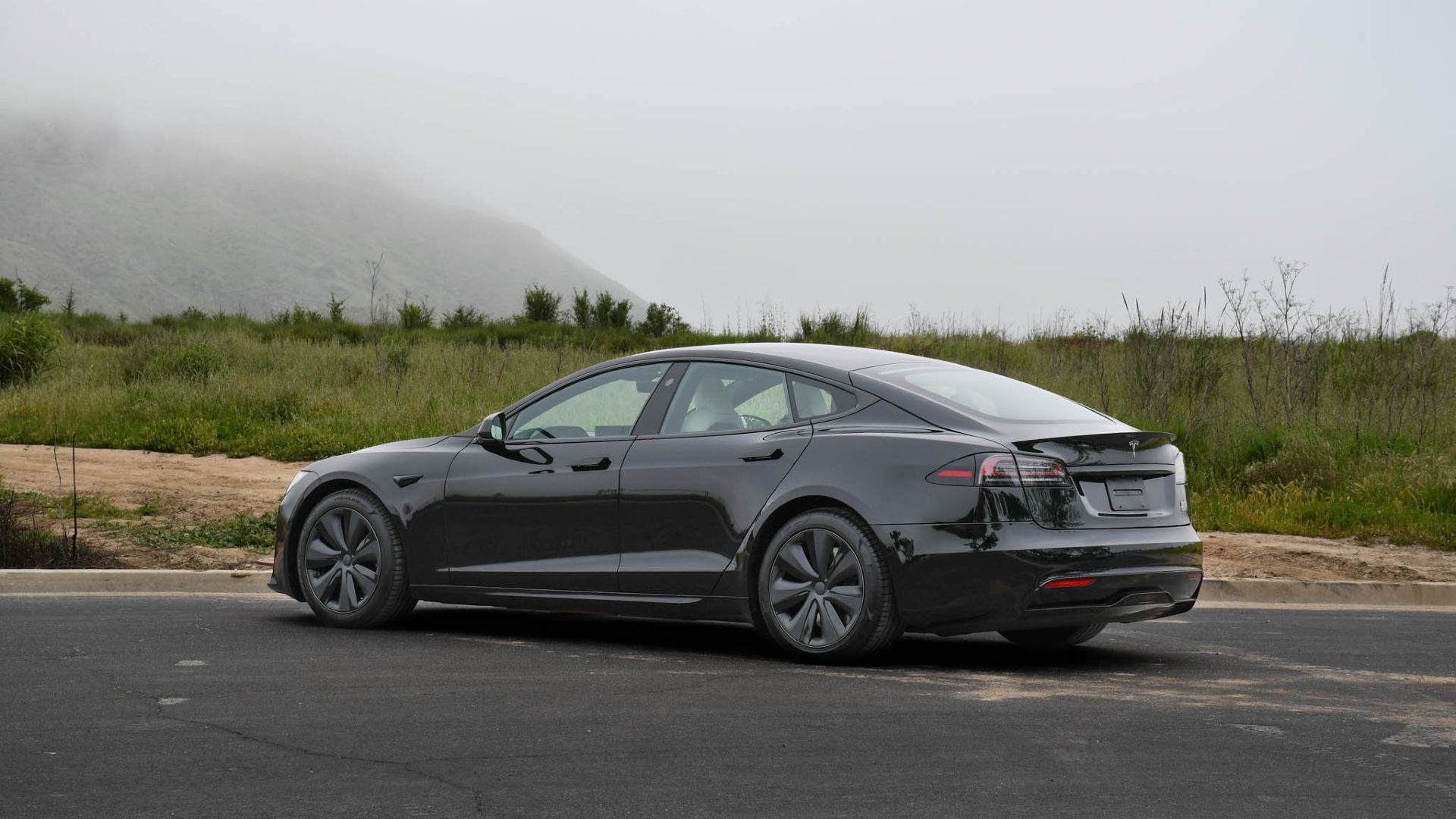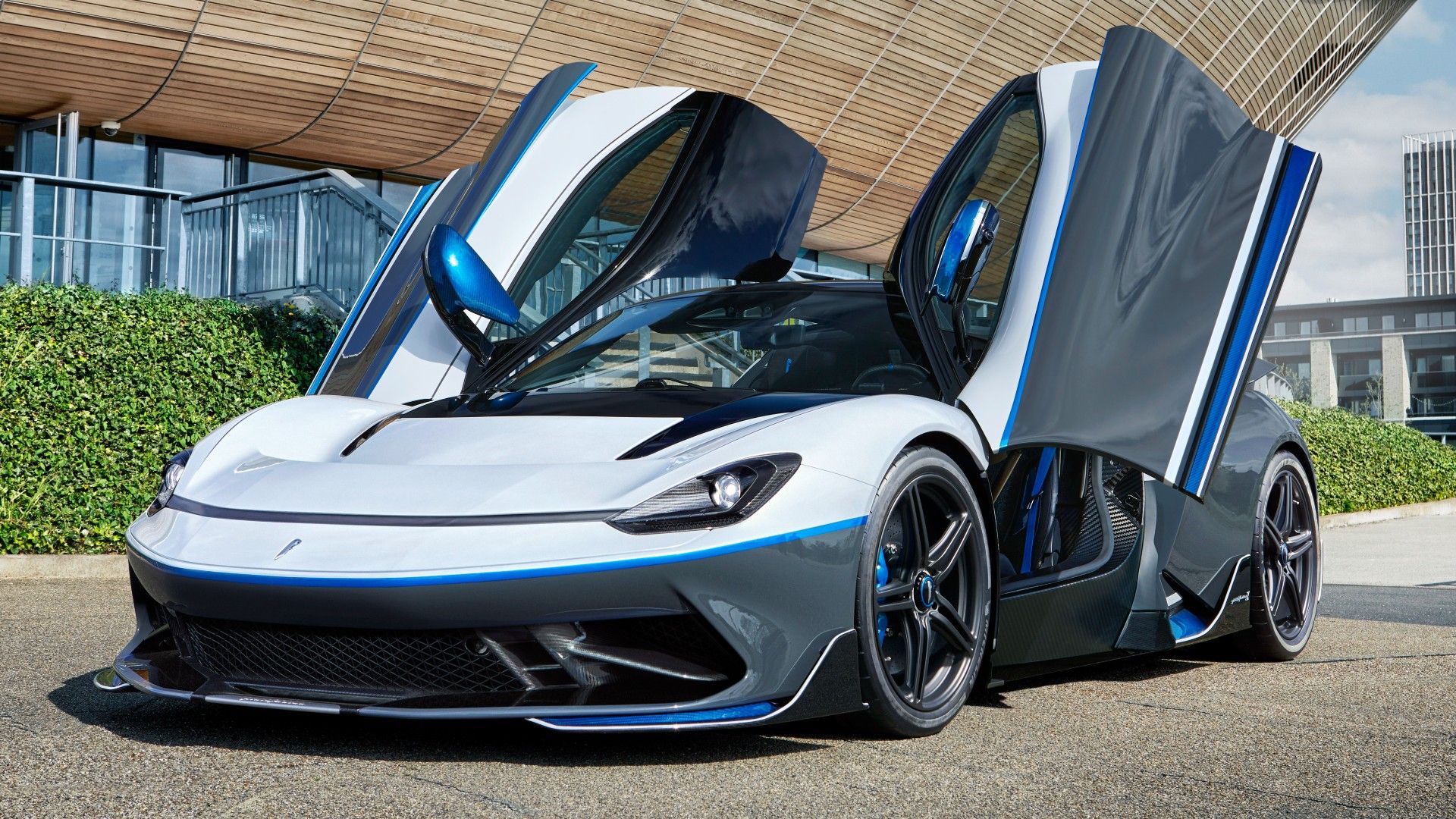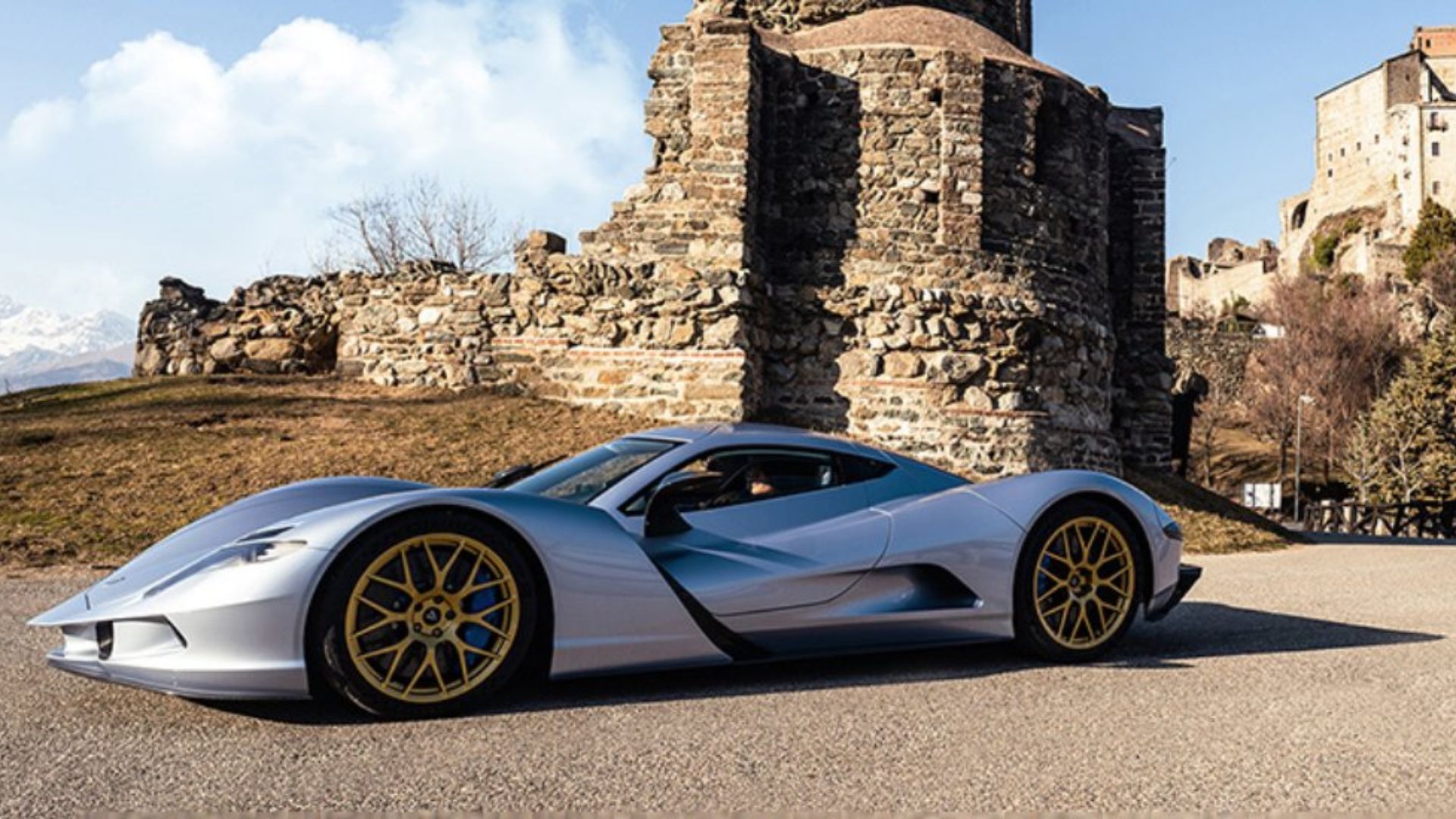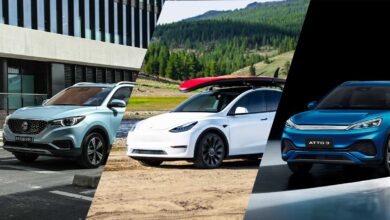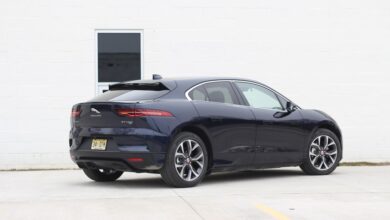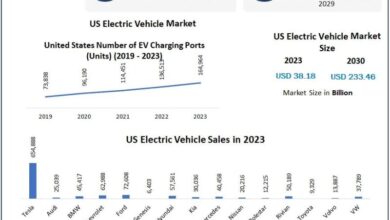10 Electric Cars That Prioritize Performance Over Efficiency, Ranked By Horsepower
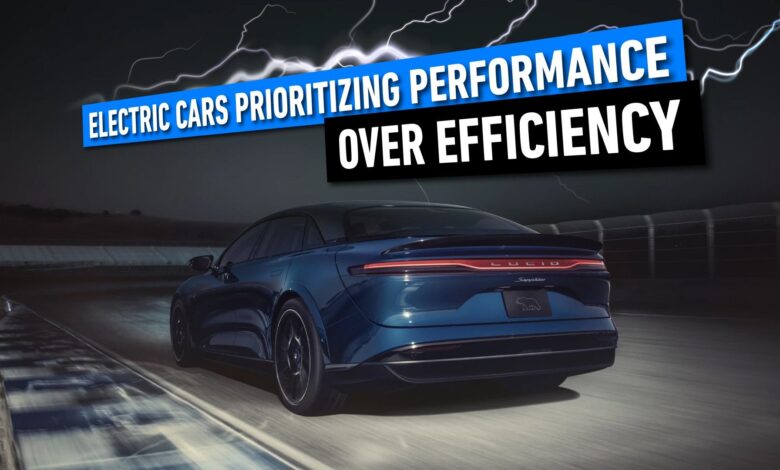
Electric vehicles might not be without faults, but they are certainly more eco-friendly in day-to-day use compared to gas-only rides. That being said, there exists a wide range of EVs that push the limits of what battery-only powered cars can do. In this day and age, you don’t need to spend in the mid-six-figure range to hit 60 mph in less than four seconds. In fact, that’s what some would argue is one of the biggest advantages of EVs: the near-instantaneous torque delivery and outright crazy acceleration.
There so many electric cars that prioritize performance over efficiency, so for this list, we’ve decided to look at a range of models that includes some supercars, some high-end sports cars, and there’s even a Tesla in the mix too. This isn’t exactly a definitive list, but can you beleive that the slowest car to 60 mph on this list is the Mercedes EQE, which makes the sprint in 3.2 seconds? If you’re someone that remembers the days with six-second sprints were fast, take a close look at what mainstream, luxury, and exotic automakers are doing with electric cars today. It will blow your mind.
2:58
The Fastest Electric Cars In The World
Some of these electric cars come with ridiculous specs that seem too good to be true, yet they have proven to be the fastest EVs in the world.
In order to give you the most up-to-date and accurate information possible, the data used to compile this article was sourced from various manufacturer websites and other authoritative sources. The models below have been ranked based on their 0-60 mph from slowest to 60 mph to fastest.
1 Mercedes-Benz AMG EQE Sedan
0-60 mph: 3.2 Seconds
To start things off, we have the Mercedes-AMG EQE. This vehicle is like many EVs these days, generally speaking. It’s quick off the line, but heavy, and therefore struggles with stopping and turning. On paper, it looks capable, but perhaps struggles to find footing amidst regenerative braking and electronic steering technologies. Nevertheless, the luxury sedan definitely prioritizes performance over efficiency.
Performance Specifications
|
Powertrain |
Dual Motor, permanent-magnet synchronous AC |
|
Transmission |
Single-speed automatic |
|
Horsepower |
617 horsepower |
|
Torque |
701 pound-feet |
|
Driveline |
All-wheel-drive |
|
0-60 MPH |
3.2 seconds |
|
Top Speed |
146 mph |
|
Battery Pack |
90.6 kWh |
|
Curb Weight |
5,547 pounds |
(Data was collected from Mercedes)
To be fair, the EQE Sedan came to a stop from 60 mph in 105 feet, besting the ICE E63 S in MotorTrend testing. With optional carbon-ceramic brakes, the EQE seems to perform better than it feels like it does. However, Car and Driver testing saw the car stop in 168 feet from 70 mph, and 339 from 100 mph. This leaves something to be desired from a performance-oriented car, and it seems like Mercedes is still trying to work out the kinks. Still, the vehicle did test 4 milliseconds quicker than the automaker’s claimed time in a zero to sixty sprint.
Pros
- Faster off the line than claimed to be
- Cheaper than the ICE equivalent, starting at $106,900
- Boosted to 677 horsepower & 738 pound-feet of torque in Race Start mode
Cons
- Only 225 miles of range
- Weird moving brake pedal feel
- Feels it’s weight, looks could improve
2 Audi RS e-Tron GT
0-60 mph: 3.1 Seconds
Considering the AMG EQE needs a boost to surpass this next entry, here we find the Audi RS e-Tron GT, which is also boosted. It must be noted, without boost, this Audi is rated at 591 ponies. With a starting MSRP of $147,100, we are clearly stepping up the cost, however.
Performance Specifications
|
Powertrain |
Dual Motor, permanent-magnet synchronous AC |
|
Transmission |
Two-speed automatic |
|
Horsepower |
637 horsepower |
|
Torque |
612 pound-feet |
|
Driveline |
All-wheel-drive |
|
0-60 MPH |
3.1 seconds |
|
Top Speed |
155 mph |
|
Battery Pack |
93 kWh |
|
Curb Weight |
5,171 pounds |
(Data was collected from Audi)
To unleash the full power of this car, one needs launch control, and then the power is only available for 2.5 seconds. Otherwise, we are looking at about 590 steady horses available with typical use. The Audi GT shares much of its makeup with the Porsche Taycan, including the platform, electrical architecture, drivelinem and powertrain.
Pros
- Edges out the hybrid Audi RS7
- Steering wheel pedals to control regenerative braking
- Advanced chassis, modern design
Cons
- 249 miles of range
- Not as quick as Porsche and Tesla rivals
- No bragging rights over Tesla at the price point
- Unusually noisy for an EV
3 Lotus Evija
0-60 mph: 3.0 Seconds
No doubt the latter half of this list is filled with beautiful and limited exotics, but perhaps none more impressive looking than the Lotus Evija. Not only that, but the British hypercar does indeed appear to be the most powerful EV out there in terms of power output with some 1,972 horsepower available. Despite this, it’s far from the fastest on this list.
Performance Specifications
|
Powertrain |
Four electric motors, permanent magnet synchronous AC |
|
Transmission |
Single-speed automatic |
|
Horsepower |
1,972 horsepower |
|
Torque |
1,254 pound-feet |
|
Driveline |
All-wheel-drive/individual-wheel-drive |
|
0-60 MPH |
3 seconds |
|
Top Speed |
218 mph |
|
Battery Pack |
80 kWh |
|
Curb Weight |
3,700 pounds |
(Data was collected from Lotus)
Still, horsepower is king here, and so dues must be paid accordingly. The Evija looks to be one of the lighter EVs on this list too, with exception of the Pininfarina Battista. The Lotus is approaching modern Chevy Corvette weight, and that’s pretty impressive for an EV. Unfortunately, as of the time of this writing, the Lotus Evija is not street-legal in the United States, so don’t expect to see one in the wild on this side of the pond anytime soon.
Pros
- Beautiful Exotic design
- Five drive modes
- Simply the HP EV king
Cons
- Cost of 2.3 million dollars
- 130 model limit, not U.S. street legal
- 250-mile range
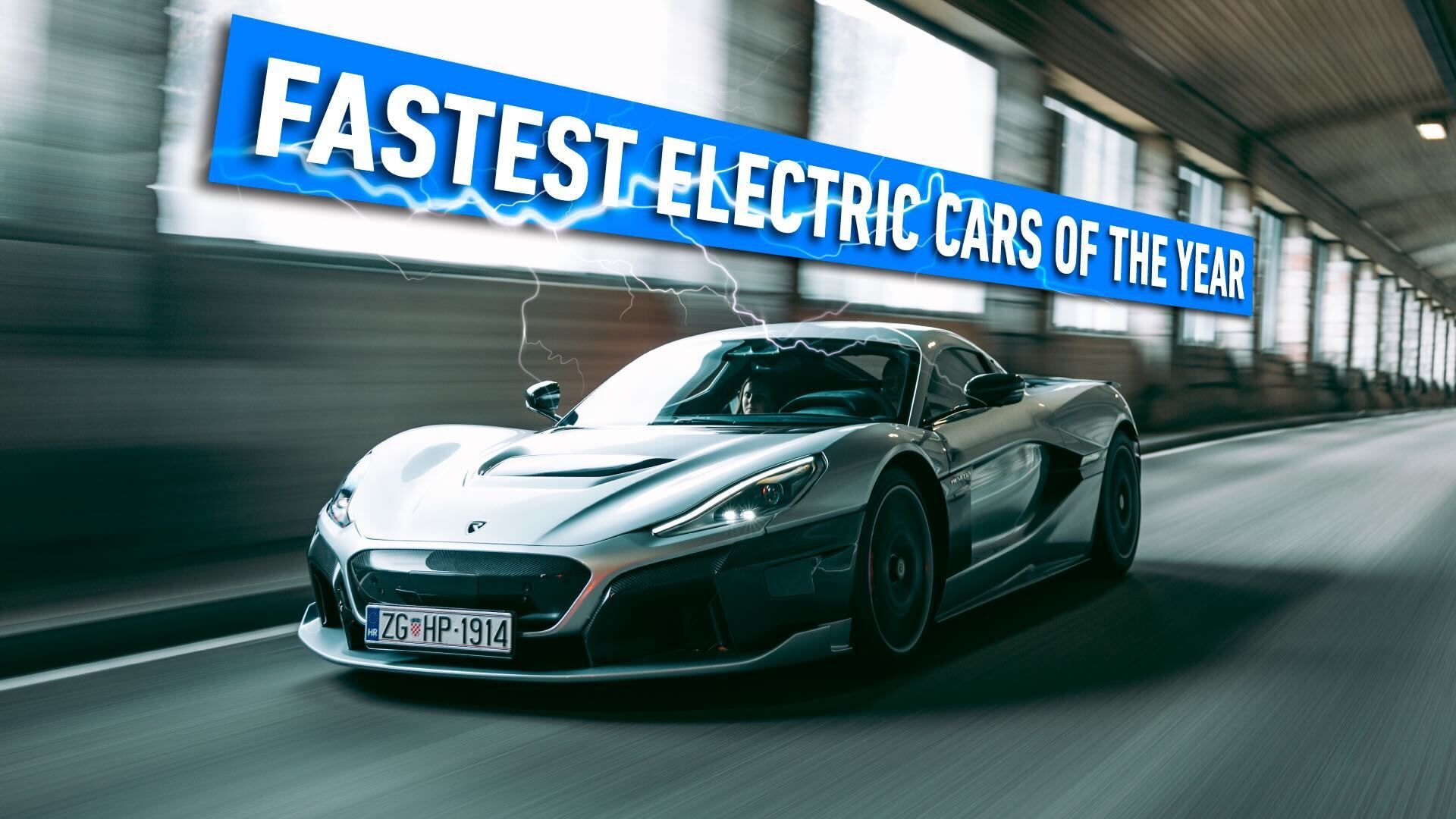
Fastest Electric Cars From 2023
EVs are known for their instantaneous torque and impressive 0-60 mph times, but not so much for the top speed. These 10 EVs break that stereotype.
4 Nio EP9
0-60 mph: 2.6 Seconds
Now we’re past the point of EVs for everyday types of people. One might not see a lot of Tesla Plaids on the street, or perhaps there’s only one Lucid Air Pure around. Given that Mercedes, Audi, and Porches are still out there quite a bit, most of us probably only see these next vehicles in photos. We’re starting with the Nio EP9.
Performance Specifications
|
Powertrain |
Four electric motors |
|
Transmission |
Four separate gearboxes per wheel |
|
Horsepower |
1,341 horsepower |
|
Torque |
1,091 pound-feet |
|
Driveline |
Individual-wheel drive/All-wheel-drive |
|
0-60 MPH |
2.6 seconds |
|
Top Speed |
194.5 mph |
|
Battery Pack |
777 volts |
|
Curb Weight |
3,835 pounds |
(Data was collected from Nio)
The Nio EP9 features one megawatt of power, which translates to 1,341 horsepower. This thing pulls over 3.0 Gs, creates F1 car-type downforce, and costs several million dollars. The batteries weigh 1,400 pounds, and only take 45 minutes to charge. Here’s what’s weird about the EP9, though. It has a fair range of 265 miles. That’s not bad for this level of performance, but did you know that, despite the 45 minute charging time, you only have to wait 8 minutes to get bac onto the track? The Nio EP9 features battery swapping technology, and the battery has to be removed for it to be charged, so in 8 minutes, the battery can be replaced with a fully charged unit, and you can get back to the fun.
Pros
- Record Nürburgring EV time on release
- Quick charge time
- Easily swapped batteries
Cons
- Only limited numbers exist
- Range of 265 miles
- Cost millions of dollars
5 Porsche Taycan Turbo GT
0-60 mph: 2.3 Seconds
Despite the fact that the Audi RS e-Tron GT is a twin to the Taycan, the RS e-Tron GT is not on the same level as the Taycan Turbo GT. The latter is half a second quicker to 60 mph from a stop than the former. This should be expected by looking at the Turbo GT’s starting MRSP of $230,000. Now just expand on this when talking about the new Taycan Turbo GT. The Turbo S has 774 horsepower, boosted to up to 938 ponies, while the GT version makes considerably more
Performance Specifications
|
Powertrain |
Dual Motor, permanent-magnet synchronous AC |
|
Transmission |
Front and rear, direct drive and two-speed automatic |
|
Horsepower |
1,019 – 1,093 horsepwoer |
|
Torque |
988 pound-feet |
|
Driveline |
All-wheel-drive |
|
0-60 MPH |
2.1 – 2.3 seconds |
|
Top Speed |
190 mph |
|
Battery Pack |
105-kWh |
|
Curb Weight |
4,950-5,100 pound estimate |
(Data was collected from Porsche)
The Taycan Turbo GT is out for blood, evidenced by the records Porsche set at Laguna Seca and the Nürburgring. It bested the Tesla Model S Plaid by 18 seconds, and the Turbo S by 26 seconds, respectively, at the ‘ring. Just as quick, lighter, and with better rubber, it foresees the Turbo GT to raise that bar.
Pros
- Boosted to up to 1,092 horsepower
- Appears substantial enough to take out top EV rivals
- No-cost option Weissach package
Cons
- 222 miles of range
- Starting MSRP of $231,995
- No rear seat or rear speakers to save weight
6 2021 Tesla Model S Plaid
0-60 mph: 2.1 Seconds
When talking about performance over efficiency regarding EVs, it’s tough not to include the Tesla Model S Plaid. This vehicle is rated at 1,020 horsepower, and yet it has a range of 348 miles. However, it only reached 80 percent of this range in real world testing, during Car and Driver’s 75 mph highway test. Therefore, we have to say that performance does more than edge out efficiency here.
Performance Specifications
|
Powertrain |
Three permanent magnet synchronous AC motors |
|
Transmission |
Front and rear direct drives |
|
Horsepower |
1,020 horsepower |
|
Torque |
1,050 pound-feet |
|
Driveline |
All-wheel-drive |
|
0-60 MPH |
2.1 seconds |
|
Top Speed |
162 mph government limited |
|
Battery Pack |
99.3 kWh |
|
Curb Weight |
4,828 pounds |
(Data was collected from Tesla)
The Plaid is a vehicle said to keep 1,000 ponies all the way to a 200 mph top speed, but it can’t even go that fast without some updates. Nevertheless, this thing tied the Bugatti Chiron’s quarter mile time, all while running eight consecutive consistent passes! It ran a 9.4 second pass, with a 7:35 Nürburgring time.
Pros
- Blisteringly quick
- Works to make EVs as good as they come
- Relatively light with three motors
Cons
- Starts at $131,440
- Awkward steering yoke
- An aging design
7 Lucid Air Sapphire
0-60 mph: 2.0 Seconds
We are now in 2024, and as things stand, the best overall EV is none other than the Lucid Air. We’re talking about a vehicle with both range and performance at the forefront, with all this in a luxury four-door sedan to boot. After all, three motors with a combined 1,234 horses, adds up to a nine-second quarter mile! Hitch to that 427 miles of range, and we have the longest available road trip distance out there on the market.
Performance Specifications
|
Powertrain |
Single front and dual rear permanent magnet synchronous AC motors |
|
Transmission |
Single-speed automatic |
|
Horsepower |
1,234 horsepower |
|
Torque |
1,430 pound-feet |
|
Driveline |
All-wheel-drive |
|
0-60 MPH |
2.0 seconds |
|
Top Speed |
205 mph |
|
Battery Pack |
118 kWh |
|
Curb Weight |
5,400 pounds |
(Data was collected from Lucid)
We’re cheating here, because the Sapphire model breaks our methodology of horsepower ratings of over 500 coupled with a range of less than 300 miles, but how can a vehicle this good be left off the list? Not only that, but despite the record range, the Sapphire still has nearly triple that in ponies. Therefore, it’s safe to say that this vehicle still prioritizes performance over efficiency, it’s just that overall it’s that good. Unlike the Plaid, the top speed is legit, and the design is more attractive. Unfortunately for us, it’s the entry level Pure that comes at the most attainable price point of $71,400.
Pros
- About as quick as a car gets
- Longest range of any EV
- Entry level price point is attainable
Cons
- Starting MRSP of $250,500 for Sapphire
- Infotainment still needs work
- Noisy tires, some cheap interior pieces
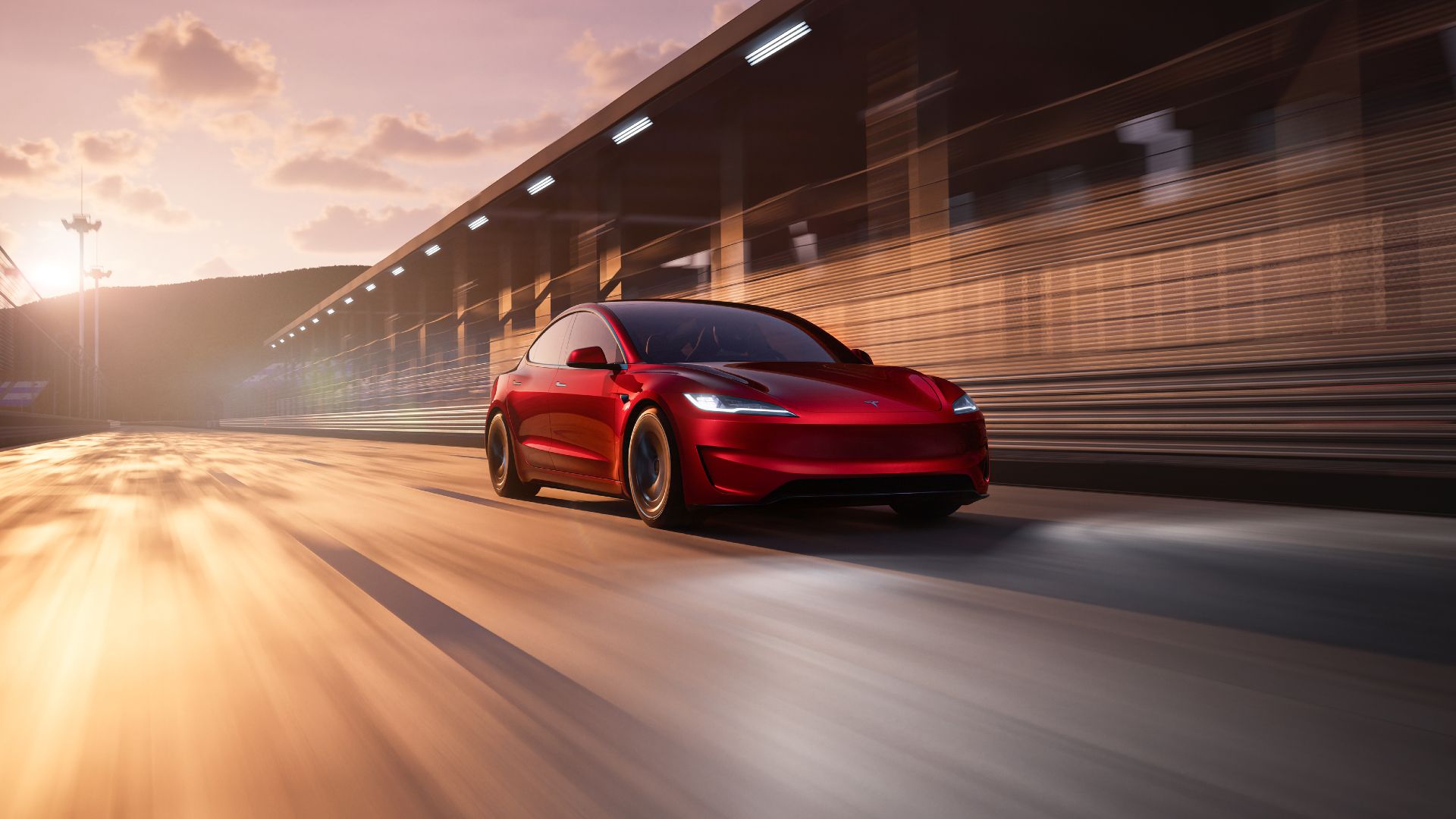
10 Electric Cars That Are Faster Than They Look
Many EVs are blazingly fast but look slower than gas-powered options. Here are some of the fastest “sleeper” cars on the market.
8 Pininfarina Battista
0-60 mph: 1.79 Seconds
The story of the Pininfarina Battista is an interesting one to say the least. Automobili Pininfarina was born in 2018, to produce commercial electric cars. Its design studios are based in Italy, but the headquarters are in Germany, while the CEO is Swedish. The engineering is shared with Croatia’s Rimac, as it has the platform and powertrain of the Nevera. However, the money mostly comes from Mahindra of India. All this after Battista “Pinin” Farina established the Italian company in 1930 that the car is named for.
Performance Specifications
|
Powertrain |
Four electric motors, permanent magnet synchronous AC |
|
Transmission |
Front and rear direct drives |
|
Horsepower |
1,900 horsepower |
|
Torque |
1,726 pound-feet |
|
Driveline |
All-wheel-drive/individual-wheel-drive |
|
0-60 MPH |
1.79 seconds |
|
Top Speed |
222 mph |
|
Battery Pack |
120 kWh |
|
Curb Weight |
2,548 pounds |
(Data was collected from Pininfarina)
With roughly a 230-mile real world range, the Pininfarina Battista is rated for 310 miles. Sharing its platform with the Rimac Nevera, it uses the same motors and battery pack. As such, the Nevera still sports a more powerful chassis, and is still be the champ between the two.
Pros
- Hand built in Italy
- Claimed fastest braking EV in the world
- Closely related to Rimac Nevera
Cons
- 150 or so built
- Around 300 miles of range
- Cost over 2 million dollars
9 Rimac Nevera
0-60 mph: 1.74 Seconds
Aptly named after a quick, sudden, and mighty storm that is charged by lighting, enter in Croatia’s Rimac Nevera. It may seem like splitting hairs between the Pininfarina Battista and the Nevera, but the latter looks like the fastest electric car in the world. The Nevera has managed to run up to 171 mph in reverse and even set a Nurburgring record back in 2023.
Performance Specifications
|
Powertrain |
Four electric motors, permanent magnet synchronous AC |
|
Transmission |
Front and rear direct drives |
|
Horsepower |
1,914 horsepower |
|
Torque |
1,730 pound-feet |
|
Driveline |
All-wheel-drive/individual-wheel-drive |
|
0-60 MPH |
1.74 seconds |
|
Top Speed |
258 mph |
|
Battery Pack |
120 kWh |
|
Curb Weight |
5,100 pounds |
(Data was collected from Rimac)
Whether one prefers the styling of the Battista over the Nevera is debatable, but what is not is that the latter is more powerful despite what the two vehicles share. The weight differences seem to result in milliseconds of difference for quickness, but the Nevera is undoubtedly the faster car. Let’s not forget the massive PR stunt that had the Nevera set 23 new world records in one day.
Pros
- Held the 1/4-mile EV record before the Battista
- Fastest EV in the world
- First EV to run a sub 2 second 0-60 mph time
Cons
- Costs over 2 million dollars
- 150 unit production limit
- 205-mile range
10 Aspark Owl
0-60 mph: 1.74 Seconds
The Aspark Owl is insanely fast to 60 mph, but it’s also one of the most powerful electric cars available today. As much as 1,984 horsepower has been stated, but Aspark claims the output to be 1,953 base ponies. Either figure seems to make it the penultimate entry here in terms of horsepower ratings, but things are still definitely close.
Performance Specifications
|
Powertrain |
Four electric motors, permanent magnet synchronous AC |
|
Transmission |
Dual-speed |
|
Horsepower |
1,953 horsepower |
|
Torque |
1,475 pound-feet |
|
Driveline |
All-wheel-drive/individual-wheel-drive |
|
0-60 MPH |
1.72 seconds |
|
Top Speed |
256 mph |
|
Battery Pack |
69 kWh |
|
Curb Weight |
4,400 pounds |
(Data was collected from Aspark)
The Aspark Owl is almost as fast as the Rimac Nevera, and perhaps even quicker. With a range of 280 miles, it does appear to be more efficient, but that’s still not great overall. However, with almost 2,000 horsepower on tap, who cares! In that sense, the electric range is plenty and then some.
Pros
- Not many challengers in the HP segment
- Beautiful design
- First Japanese EV hypercar
Cons
- Starts at 3.1 million dollars
- Limited to 50 examples
- Perhaps not the most powerful EV out there
